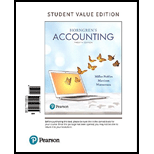
Introduction:
Payback Period: Payback period is the period in which the project recovers its initial cost of the investment. It can be calculated by dividing the initial investment by the annual
Hence, smaller the payback period better it is. A project with the smaller payback period is chosen first in the capital rationing process.
ARR: Accounting
The formula to calculate ARR is as follows:
Hence, higher the ARR better it is. A project with the Higher ARR is chosen first in the capital rationing process.
NPV:
A project should be accepted if it has a positive NPV. Hence, higher the NPV better it is. A project with the Higher NPV is chosen first in the capital rationing process.
Profitability Index: Profitability Index is similar to the NPV method to evaluate a project. It calculates the ratio between the present value cash inflow and present value of
A project should be accepted if it has a PI more than or equal to 1. Hence, higher the NPV better it is. A project with the Higher NPV is chosen first in the capital rationing process.
Requirement-1:
To Calculate: The payback, ARR, the NPV, and the profitability index of the two options
Requirement -2:
To determine: The selection of investment option
Want to see the full answer?
Check out a sample textbook solution
Chapter 26 Solutions
Horngren's Accounting, Student Value Edition (12th Edition)
- Morgan Corp. purchased $600,000 of 8% bonds of Thompson Inc. on January 1, 2022, paying $567,300. The bonds mature January 1, 2032; interest is payable each July 1 and January 1. The discount of $32,700 provides an effective yield of 9%. Morgan Corp. uses the effective-interest method and plans to hold these bonds to maturity. On July 1, 2022, Morgan Corp. should increase its Held-to-Maturity Debt Securities account for the Thompson Inc. bonds by: a. $3,270 b. $1,635 c. $1,529 d. $978arrow_forwardWhat is the cash paid to employees during the year on these financial accounting question?arrow_forwardPlease provide the accurate answer to this financial accounting problem using valid techniques.arrow_forward

 AccountingAccountingISBN:9781337272094Author:WARREN, Carl S., Reeve, James M., Duchac, Jonathan E.Publisher:Cengage Learning,
AccountingAccountingISBN:9781337272094Author:WARREN, Carl S., Reeve, James M., Duchac, Jonathan E.Publisher:Cengage Learning, Accounting Information SystemsAccountingISBN:9781337619202Author:Hall, James A.Publisher:Cengage Learning,
Accounting Information SystemsAccountingISBN:9781337619202Author:Hall, James A.Publisher:Cengage Learning, Horngren's Cost Accounting: A Managerial Emphasis...AccountingISBN:9780134475585Author:Srikant M. Datar, Madhav V. RajanPublisher:PEARSON
Horngren's Cost Accounting: A Managerial Emphasis...AccountingISBN:9780134475585Author:Srikant M. Datar, Madhav V. RajanPublisher:PEARSON Intermediate AccountingAccountingISBN:9781259722660Author:J. David Spiceland, Mark W. Nelson, Wayne M ThomasPublisher:McGraw-Hill Education
Intermediate AccountingAccountingISBN:9781259722660Author:J. David Spiceland, Mark W. Nelson, Wayne M ThomasPublisher:McGraw-Hill Education Financial and Managerial AccountingAccountingISBN:9781259726705Author:John J Wild, Ken W. Shaw, Barbara Chiappetta Fundamental Accounting PrinciplesPublisher:McGraw-Hill Education
Financial and Managerial AccountingAccountingISBN:9781259726705Author:John J Wild, Ken W. Shaw, Barbara Chiappetta Fundamental Accounting PrinciplesPublisher:McGraw-Hill Education





